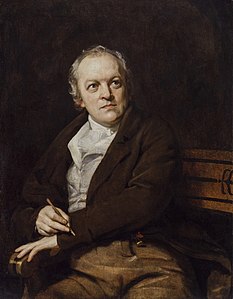Analysis of To The Accuser Who is The God of This World
William Blake 1757 (Soho) – 1827 (London)
Truly My Satan thou art but a Dunce
And dost not know the Garment from the Man
Every Harlot was a Virgin once
Nor canst thou ever change Kate into Nan
Tho thou art Worship'd by the Names Divine
Of Jesus & Jehovah thou art still
The Son of Morn in weary Nights decline
The lost Travellers Dream under the Hill
| Scheme | ABAB CDCD |
|---|---|
| Poetic Form | Traditional rhyme Quatrain |
| Metre | 1011011101 0111010101 1001010101 1111011011 1111010101 110010111 0111010101 0110011001 |
| Closest metre | Iambic pentameter |
| Characters | 310 |
| Words | 63 |
| Sentences | 1 |
| Stanzas | 2 |
| Stanza Lengths | 4, 4 |
| Lines Amount | 8 |
| Letters per line (avg) | 31 |
| Words per line (avg) | 8 |
| Letters per stanza (avg) | 123 |
| Words per stanza (avg) | 31 |
Font size:
Submitted on May 13, 2011
Modified on April 28, 2023
- 19 sec read
- 281 Views
Citation
Use the citation below to add this poem analysis to your bibliography:
Style:MLAChicagoAPA
"To The Accuser Who is The God of This World" Poetry.com. STANDS4 LLC, 2024. Web. 28 May 2024. <https://www.poetry.com/poem-analysis/39206/to-the-accuser-who-is-the-god-of-this-world>.


Discuss this William Blake poem analysis with the community:
Report Comment
We're doing our best to make sure our content is useful, accurate and safe.
If by any chance you spot an inappropriate comment while navigating through our website please use this form to let us know, and we'll take care of it shortly.
Attachment
You need to be logged in to favorite.
Log In